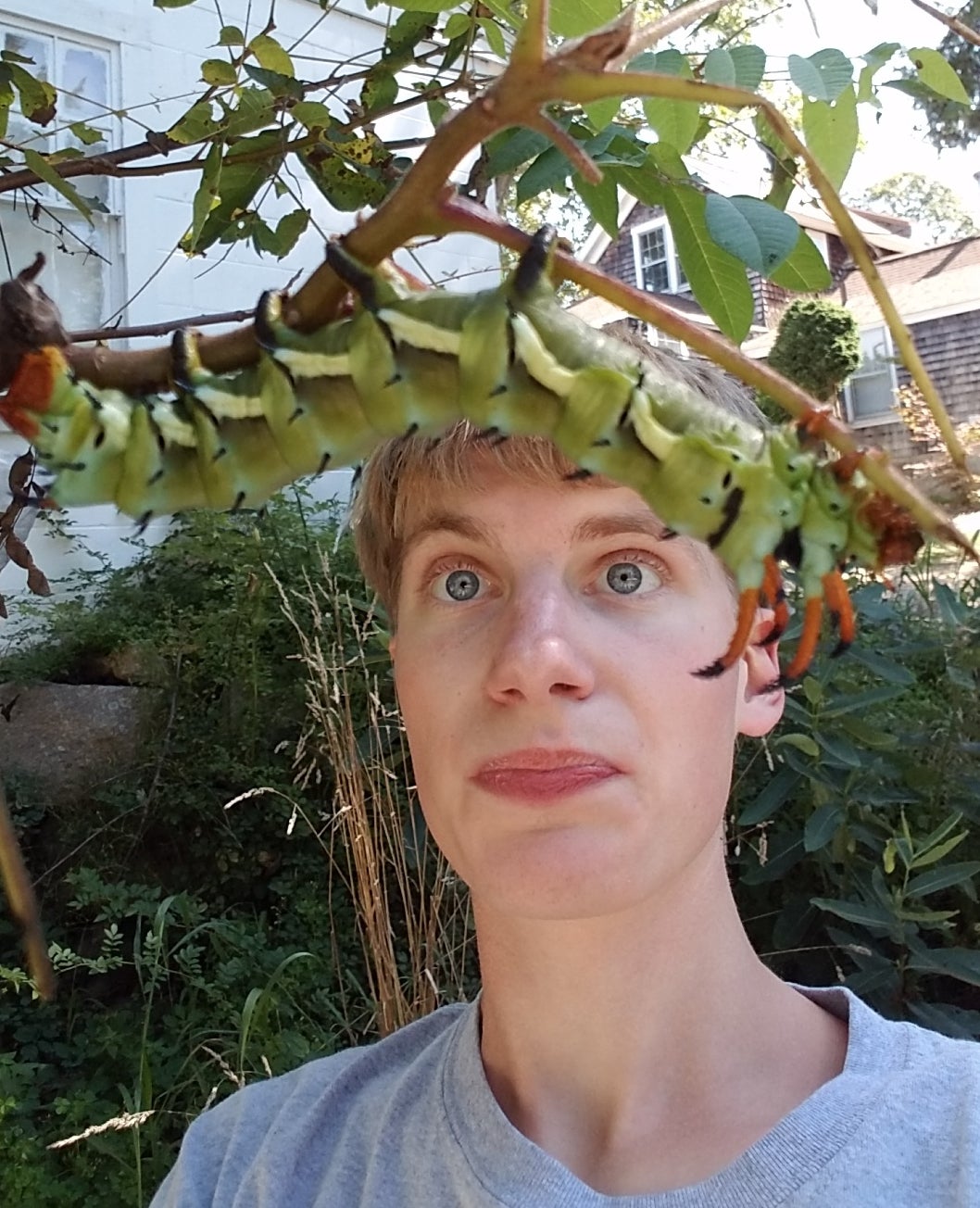University of Rhode Island senior Alex Baranowski has been fascinated with insects since a young age. He raised mantises, butterflies and moths at home during his high school years, and even conducted scientific inquiries about the life cycle of some of the species he collected.
Now the Bristol, Conn., native has taken his insect investigations to the next level. As a URI Coastal Fellow, he is assessing the relationship between moth caterpillars and the insects that feed upon or parasitize them.
“Insects need to eat and avoid being eaten,” said Baranowski, a biological sciences major who URI Professor Evan Preisser calls an entomological savant. “If it’s going to avoid being eaten, it has to recognize a potential predator. If you take a known predator of an insect, like a wasp, and expose the insect to that predator, how does it respond?”
Baranowski is focusing his attention on the caterpillars of luna moths, large pale green moths that live for only a week as adults and whose caterpillars struggle to avoid predation.
“I’ve been working with a predatory wasp that goes after the caterpillar, stings it, rips it up, and carries chunks of it to its nest to feed its larvae,” he explained. “It’s a nasty butchery process that the caterpillars don’t find very pleasant. My question is, does this luna moth recognize that this wasp is a potential danger and do something to prevent itself from being noticed and attacked?”
In a series of experiments, the URI student placed a luna moth caterpillar in a cage with a wasp that was unable to attack the caterpillar to see how the caterpillar would respond. He monitored the caterpillars daily, weighed them regularly, and evaluated how their growth rate differed from caterpillars not exposed to the wasp. His results were dramatic.
“The wasps basically scare the caterpillars to death,” Baranowski said. “Most of them died by starving to death or from dehydration. The best thing the caterpillars can do in the face of predatory wasps is not eat or move. That way, the wasp can’t detect them – they don’t see them moving or hear them eating. They don’t have any other options.”
According to Baranowski, interactions between luna moth caterpillars and predatory wasps are very transient. The wasp may only wander near a caterpillar for a few minutes before it wanders elsewhere. So the caterpillar must only remain motionless for short periods of time. But in a cage, they are constantly being stressed by the wasp and cannot do anything.
What did he learn from this experiment?
“Basically, these caterpillars have an innate response to do nothing until the predator leaves,” he said. “They can’t do much else. They don’t have much in terms of anti-predator defenses, probably because they live solitary lives and don’t need to defend themselves. Their camouflage is often enough to get them through their life cycle.”
The next step in Baranowski’s research is to conduct a similar study using a parasitic fly instead of predatory wasp. The fly has caused many moth species to decline in number, but the luna moth has not been affected. He wants to know whether the moth has somehow adapted to the presence of the fly and how it can distinguish between parasitic flies and flies that are not harmful.
The URI Coastal Fellows program is a unique initiative designed to involve undergraduate students in addressing current environmental problems. Now in its 21st year, it is based at URI’s College of the Environment and Life Sciences. Students are paired with a mentor and research staff to help them gain skills relevant to their academic major and future occupations.
Baranowski said that one thing he learned as a Coastal Fellow is that scientific experimentation is extremely challenging.
“I learned that running an experiment is a lot more difficult than it seems,” he said. “It’s a matter of getting yourself set up right in the first place and realizing that something is always going to go wrong.”
After Baranowski graduates from URI next May, he plans to enroll in graduate school – perhaps at URI – to continue his studies of moths and predators and eventually become a professor to pursue other related projects.
“I want to finish what I started with this project, and then see where it takes me from there,” he said.

